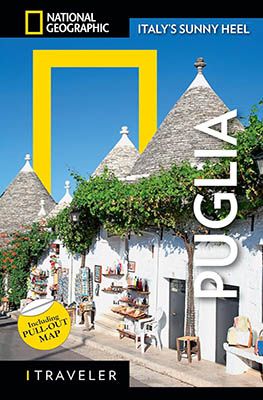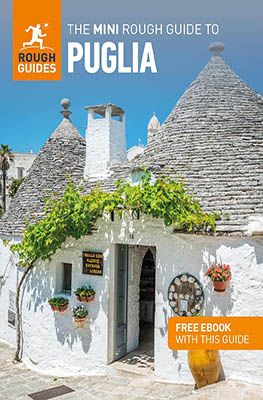In the far south, in the heel of Italy, lies Puglia. This holiday destination is becoming increasingly popular. Not surprisingly, as the region has a lot to offer. Think of Matera with its cave dwellings, the white houses with pointed roofs (‘trulli’) in Alberobello, or cities like Bari and Lecce. These are all special places to explore.
The real Southern Italian life can be found in the places beyond these tourist highlights. We are embarking on a five-day coastal walk from Otranto in a southerly direction towards Gagliano del Capo. Along a rugged coast with remarkably colorful and clear water winds a surprising footpath, the Cammino del Salento. Explore this region with us and immerse yourself in the nature and culture of this beautiful area.
In this blog ...
- The Cammino del Salento, a hiking trail along the Strait of Otranto
- Along the ‘Strait of Otranto’ on the Cammino del Salento
- Porto Badisco on a Sunday morning
- Beautiful Castro on the Cammino del Salento
- Via Marittima to Gagliano del Capo on the Cammino del Salento
- Baroque Lecce as a conclusion to a wonderful week on the Cammino Salento
- FAQs about the Cammino del Salento
- Other topics you may be interested in
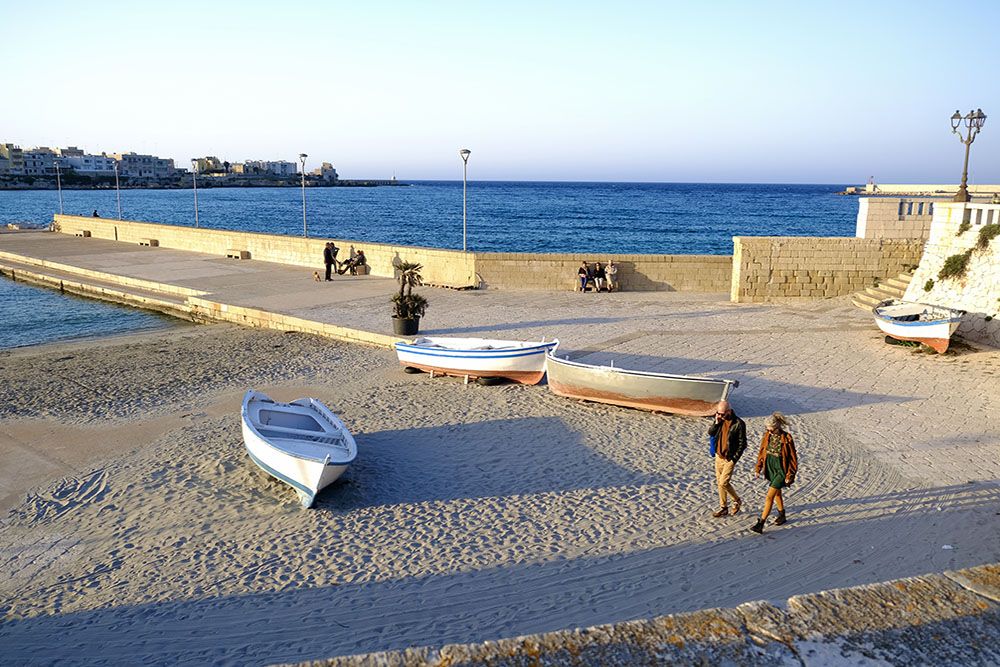
The Cammino del Salento, a hiking trail along the Strait of Otranto
After a day of ‘settling in’ in Otranto, we are curious about what awaits us. The place where the route starts is the large city gate of Otranto. We walk through the old town to the port in search of the coastal path. The sun is shining, and we have the wind from the north at our backs. The backpack is filled with water and lunch.
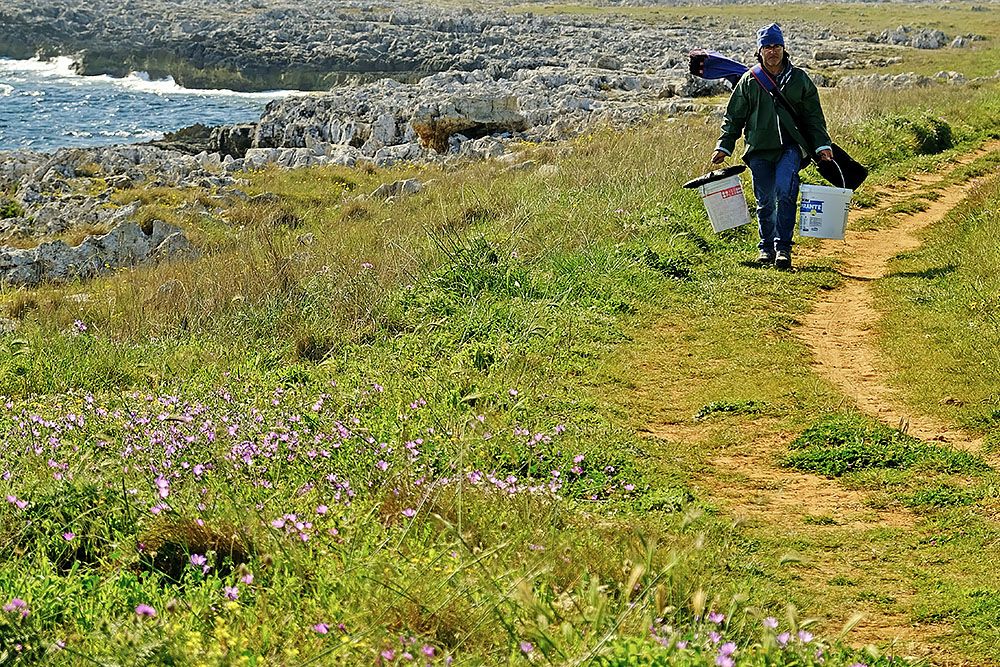
Upon reaching the hiking trail along the rocky coast, the feeling of truly being on a journey arises. There are few people, but we do see fishermen regularly. The first one we encounter is walking along the path with two buckets. When we inquire about his catch, he shows it to us and spontaneously offers us some fish. Not very practical for a day of hiking, but very kind. This kindness appears to be characteristic of the hospitality of the people here.
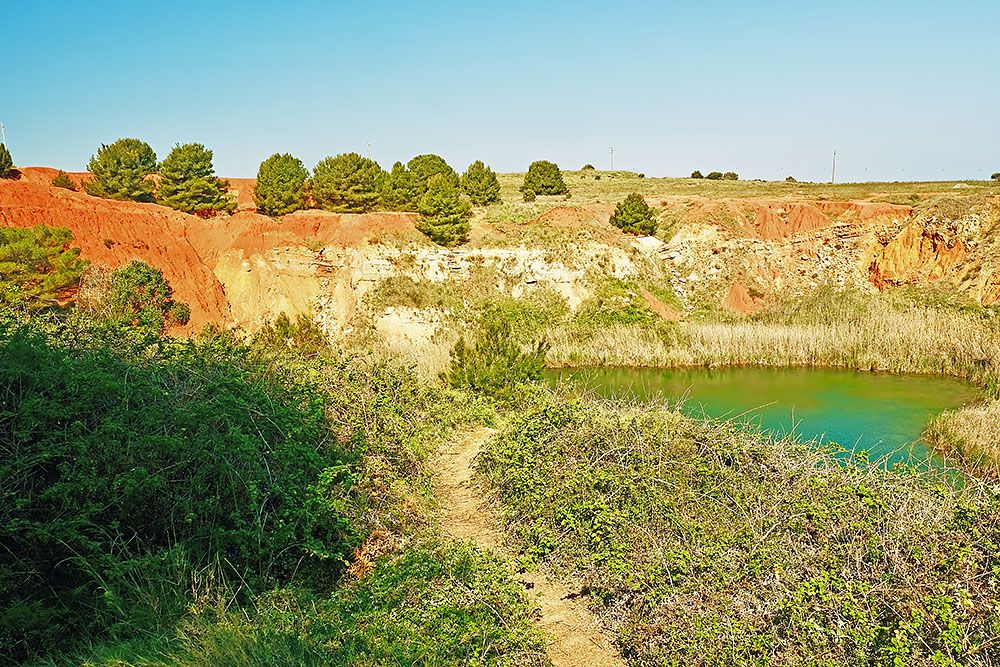
Along the ‘Strait of Otranto’ on the Cammino del Salento
After about an hour of walking along the coastline, we arrive at the restaurant ‘Orte’. We order a cappuccino on the terrace and see the first fellow hikers passing by. We opt for a variation of the route towards ‘Cava di Bauxite’, a lake that was formed by the extraction of bauxite. The small lake with green water presents a stark contrast to the red color of the landscape. It’s a beautiful sight and a nice change that doesn’t take much time.
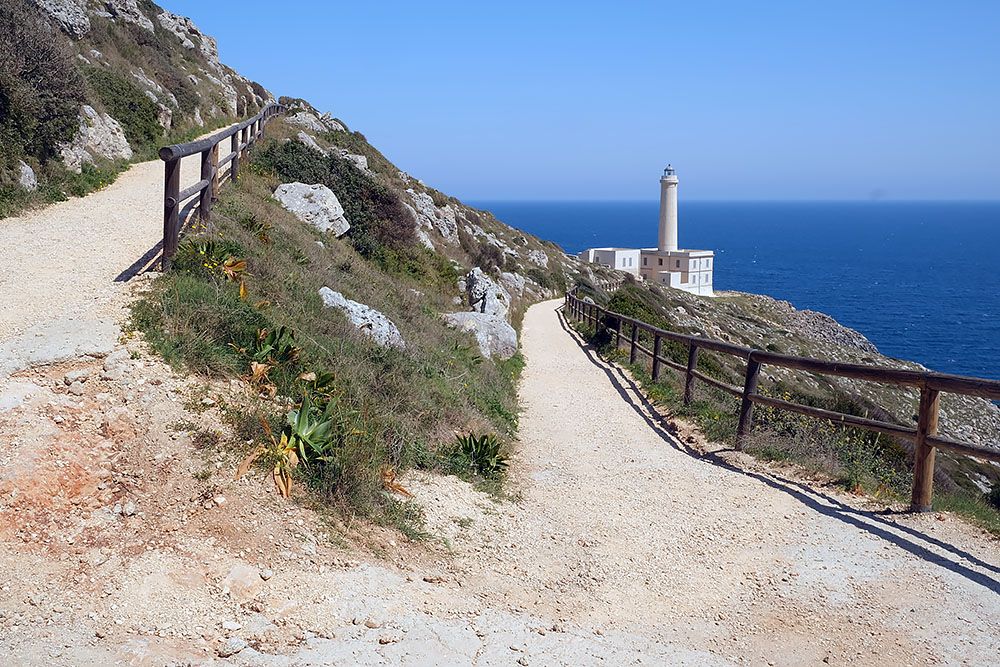
We continue the route and head towards a large lighthouse, a landmark in this area. The sea here is known as the Strait of Otranto. We are only about 75 km as the crow flies from Albania. In clear weather, this is sometimes visible. We receive a message on our phone saying “welcome to Greece”. The phone picks up the time zone of the nearby Corfu and shows a time that is an hour earlier.
The trail on this part of the route demands concentration. My partner is grateful for the walking sticks. It is important to watch where you place your feet on the somewhat narrow, rocky path. There are also sections where one might experience a fear of heights. The views are impressive time and time again. Before reaching Porto Badisco, we stay overnight at a luxurious Masseria, a little inland. Here, there is a beautiful view over the fields and the sea in the distance. A delightful place to stay and rest.
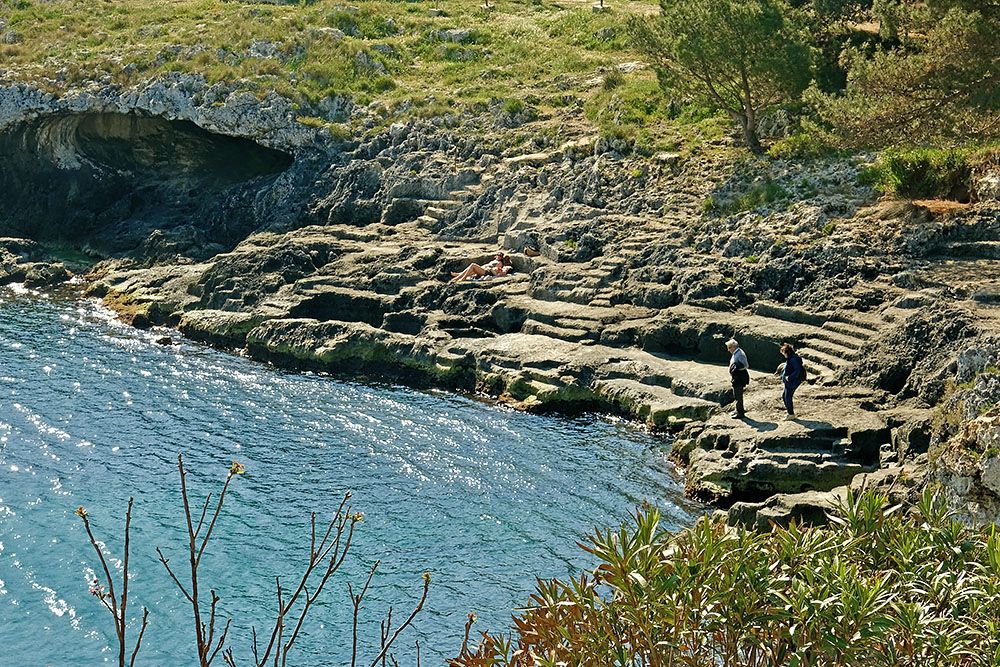
Porto Badisco on a Sunday morning
After an excellent breakfast, we walk back to the coast. It’s Sunday. We notice that there are two hobbies being pursued at Porto Badisco along the main road. Cyclists ride along the coastal road and almost always greet with a friendly ‘Buongiorno’. The second group consists of motorcyclists. They aim to navigate this winding road along the coast as quickly as possible, as if it were a course. We assume that this is mainly a weekend pastime. However, it does disturb the peace.
Porto Badisco itself boasts an idyllic bay. The water is inviting, and the first bathers have already settled in by the time we arrive. The village itself exudes tranquility and contentment. It’s a place to sit and take in the surroundings.
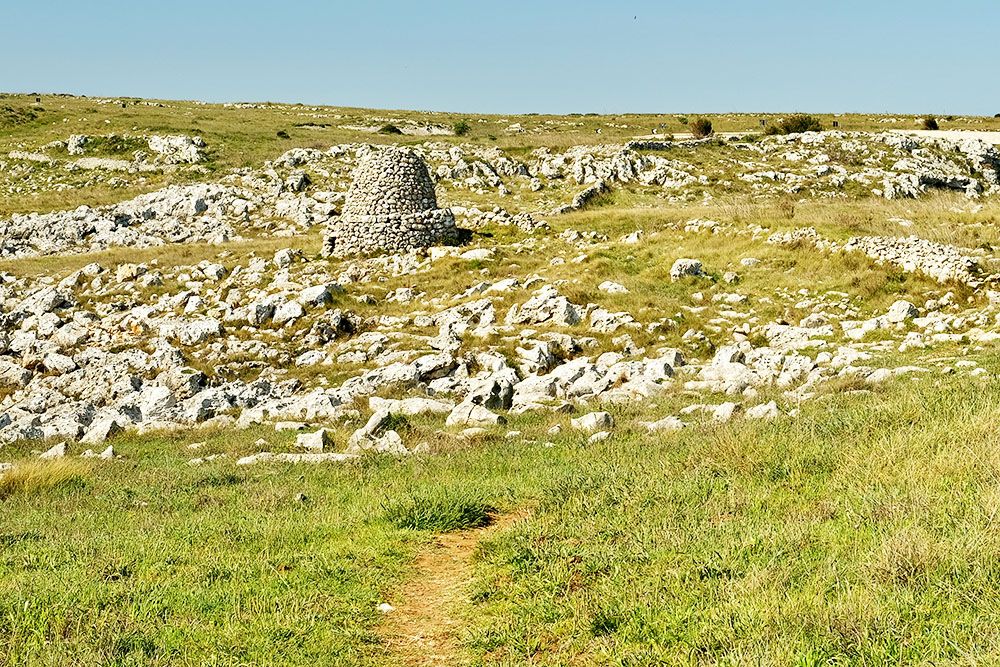
Along the hiking trail, we come across stone structures at regular intervals. They are called ‘pagliari’, overnight accommodations for shepherds. Although the route is generally easy to follow, there are times when there are multiple paths, which can be confusing. The hiking app we use for the journey proves to be a useful aid.
On this day, we follow the coastal path on autopilot and unintentionally miss a turn inland. The GPS has poor reception in this area, and we rely on our common sense to get back on track. With a slight detour, we eventually reconnect with the route and head towards Santa Cesarea Terme. It’s a place with thermal baths and luxury hotels. There’s a typical sulphur smell from the springs. The baths won’t open until the end of April. Experiencing a bath here is therefore not possible. Instead, we opt for a delayed lunch on the rooftop terrace of our hotel with a view of the sea. Not a bad alternative.
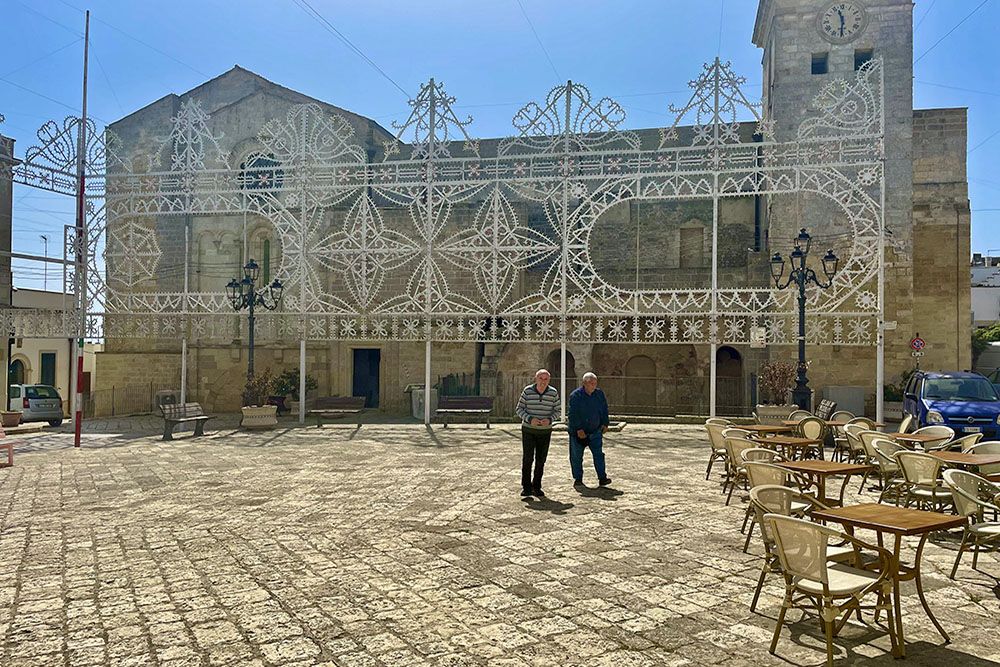
Beautiful Castro on the Cammino del Salento
After a substantial breakfast (with the necessary sweet treats), we resume the route that heads inland. We walk through a steady stretch of farmland. The profusion of flowers presents itself as a delightful sight time and time again. After 1.5 hours, we reach the town of Castro. A charming place with a beautiful old town. People are busy hanging wooden frameworks with hundreds of lights. These are preparations for the ‘luminarie’, a festival in honor of the patron or city saints. It promises to be a spectacle in Castro.
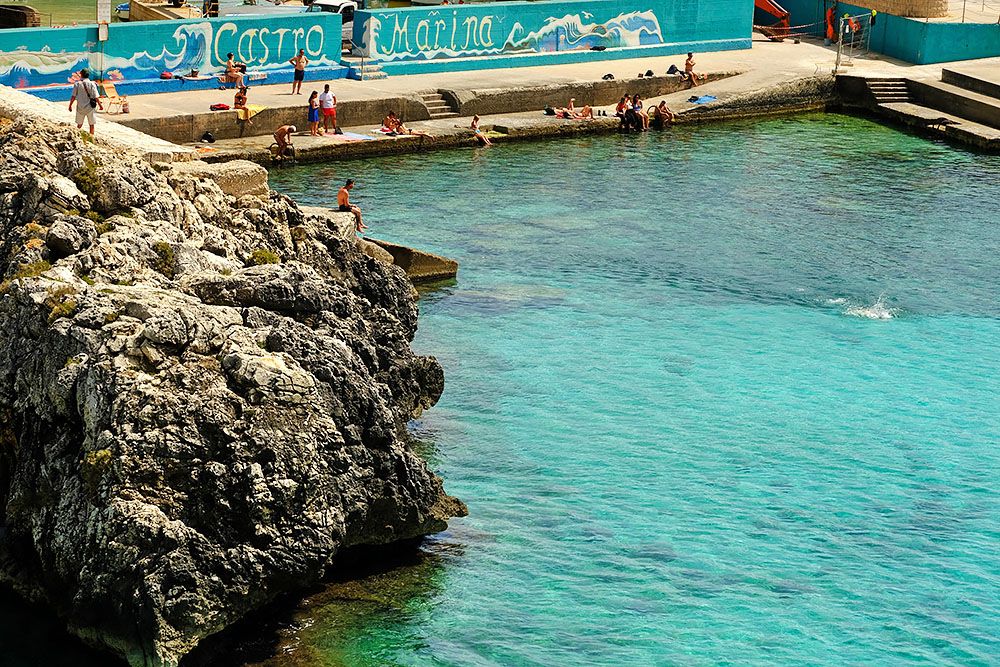
The old part of this place is situated high above sea level and features a massive fortress. In hindsight, we leave the town center too quickly. We descend to the port and the adjacent bay where, even in early April, people are already swimming. We have lunch at a small restaurant in the port in a relaxed, casual atmosphere.
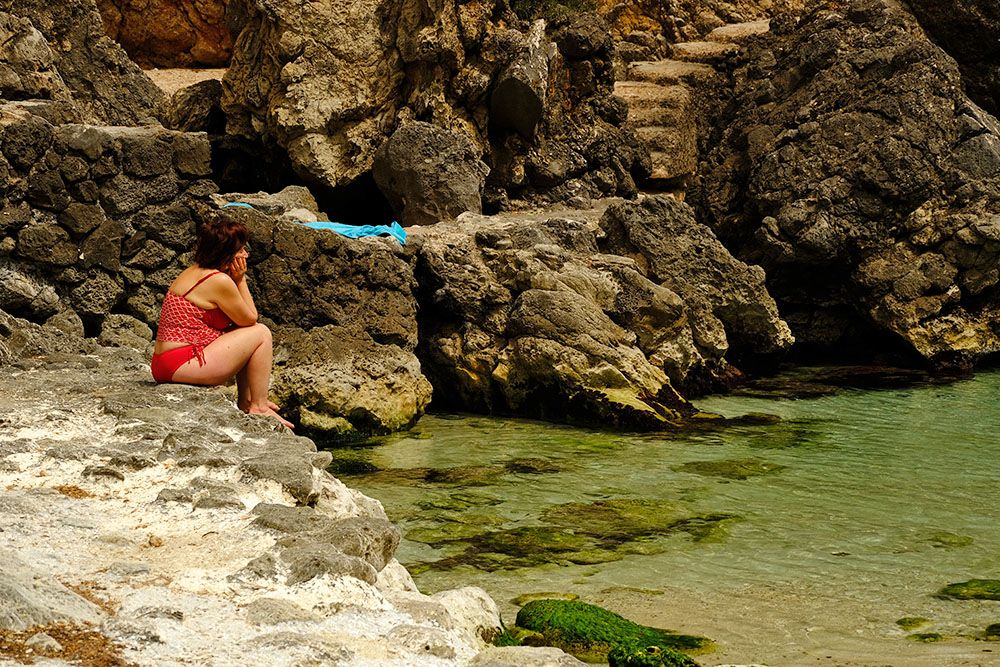
Take a break in an idyllic bay
As we continue the route, we walk between the coast and a long row of houses with a (private) passage to that coast. Everyone has their own rocky beach. Eventually, we reach a small intimate bay in a beautiful location, ‘Cala dell ‘Aquaviva’. This place is very inviting for swimming or simply sunbathing. From here, it’s a half-hour walk inland to Marittima. In the evening, we encounter several fellow hikers at the local ‘Osteria’.
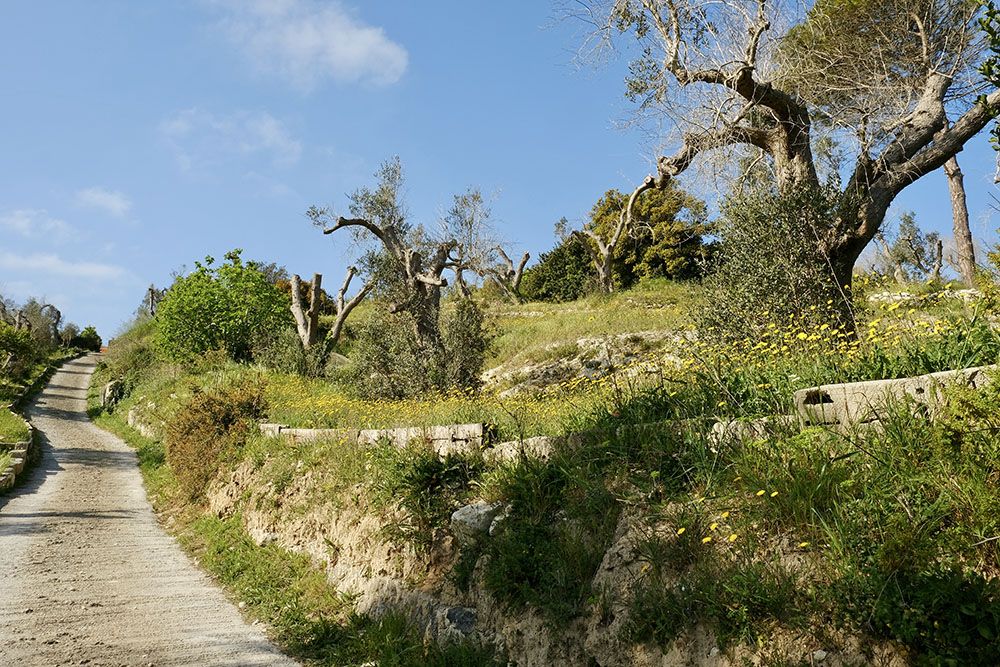
Via Marittima to Gagliano del Capo on the Cammino del Salento
The last two stages showcase both parts of the inland and the beautiful coast. We walk along old shepherd paths (‘tarturi’) amidst vast olive groves. Here, the effects of the Xylella bacteria are painfully evident. The olive trees have been heavily pruned or appear dried out. Many plots of land with olive trees are up for sale.
The path winds through the landscape with an exceptionally lush display of flowers. Lizards dart away as we approach. Suddenly, a black snake shoots across the path a few meters ahead of us. It’s likely the enemy of the lizards. Fortunately, this predator doesn’t waste time in disappearing, allowing us to continue with some caution.
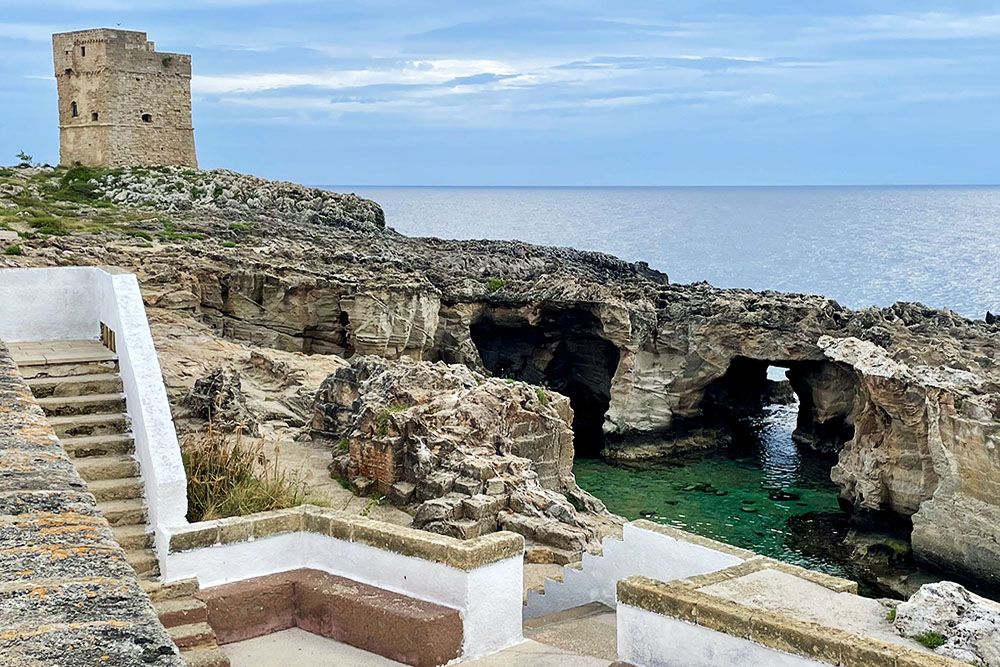
Stopping points Tricase Porto and Marina Serra
Tricase Porto is perfect for lunch. We visit the port and come across a large cistern. This has served as a water supply for the village and is now freely accessible for viewing.
The last part of the route towards Marina is along the paved road. The coast is fascinating here due to the rugged formations and natural eroded basins. The port has been carved out of the rocky coast. We are given a room with yet another beautiful sea view. In the evening, a communal dinner is organized for all nine people walking the same route. It’s a delightful and convivial gathering of five nationalities exchanging experiences.
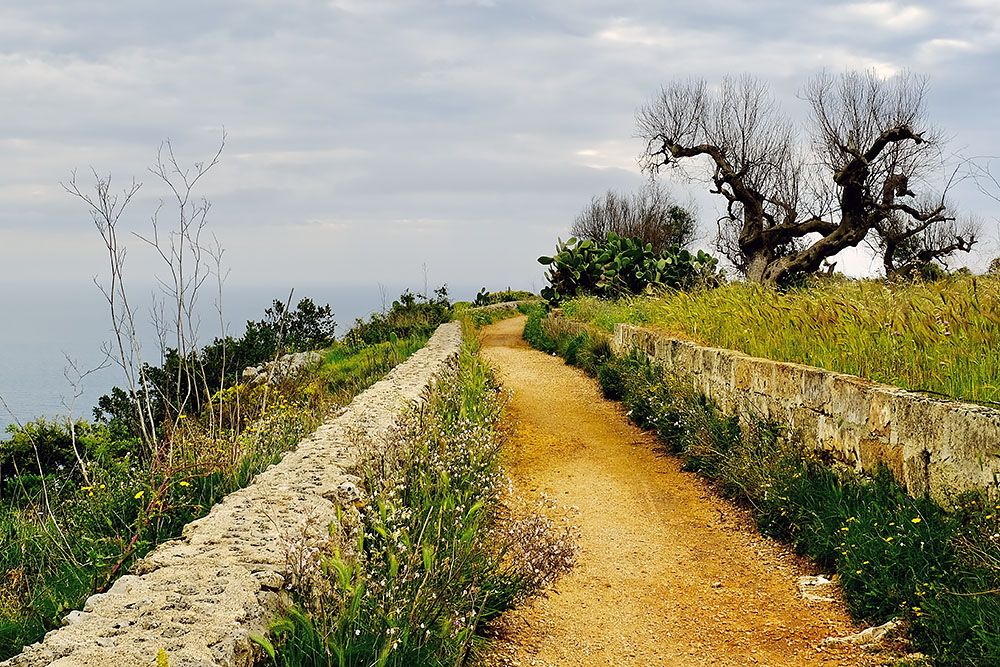
Heading to the train station in Gagliano del Capo
The next day starts with a steep climb, taking us immediately a hundred meters above sea level. The coast here is particularly rugged and impressive. The hiking trail meanders with the same unpredictability through a section with forests, olive groves, and flower fields. From time to time, we are treated to stunning sea views.
At the small village of Novaglie, we come across another harbor carved out of the rocks for the original fishing boats. This may well be one of the most beautiful parts of the route so far. The path is wider here, and the nature is genuinely impressive with the rocks and the beautifully colored clear water of the sea. At the ‘Ponte Ciolo’ bridge, we are diverted from the route to Gagliano del Capo, where we catch the train to Lecce.
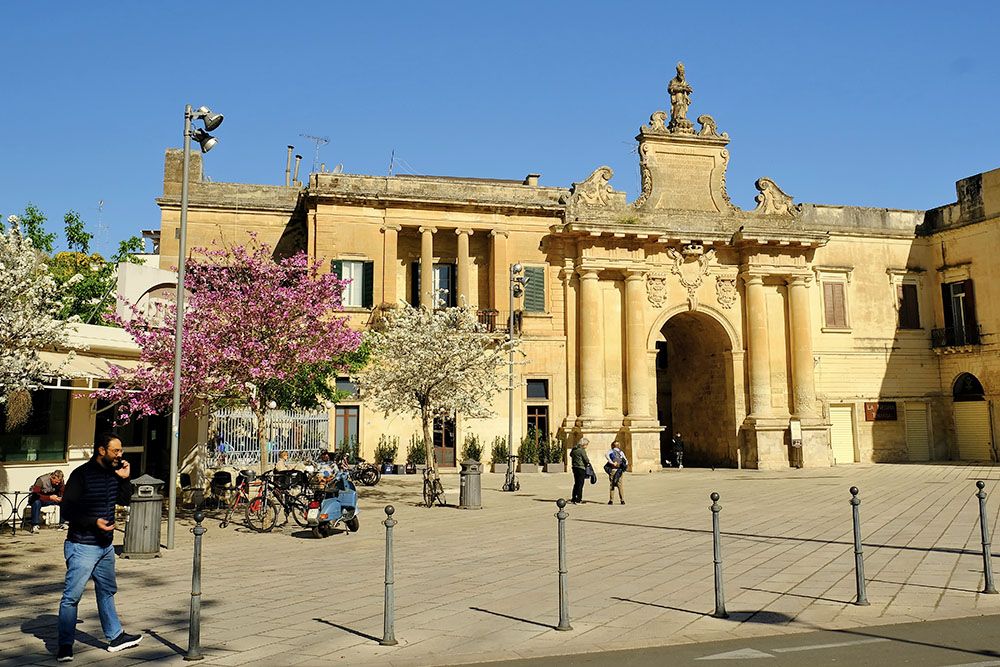
Baroque Lecce as a conclusion to a wonderful week on the Cammino Salento
The local train that takes us to Lecce (6 euros per person) seems to belong to a distant past. There is a stop in every hamlet, and time seems to stand still. Until we reach the town of Maglie, and the train fills up with fellow passengers glued to their phones.
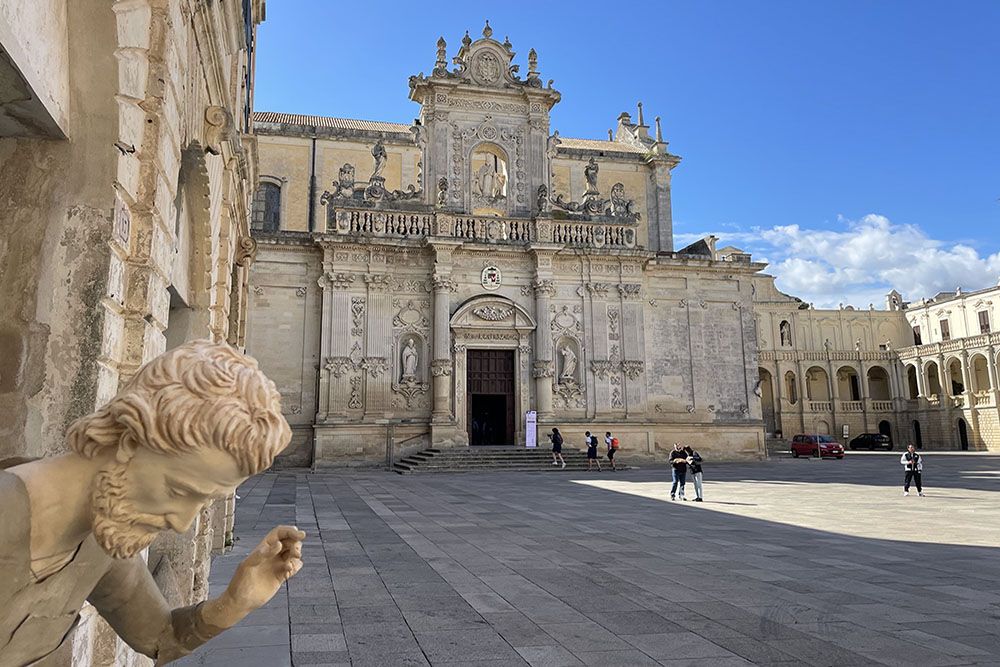
The visit to Lecce contrasts with the nature along the coast. The city center boasts numerous impressive buildings. Each street features a remarkable structure. We have opted for an extra night in this city. It’s nice to take a break, but also to process all the impressions of the past few days.
The next morning, we set off early, before the daily influx of tourists. The city is downright photogenic. The numerous churches, beautiful squares, and old streets exude a special charm. We are pleased with our extra night.
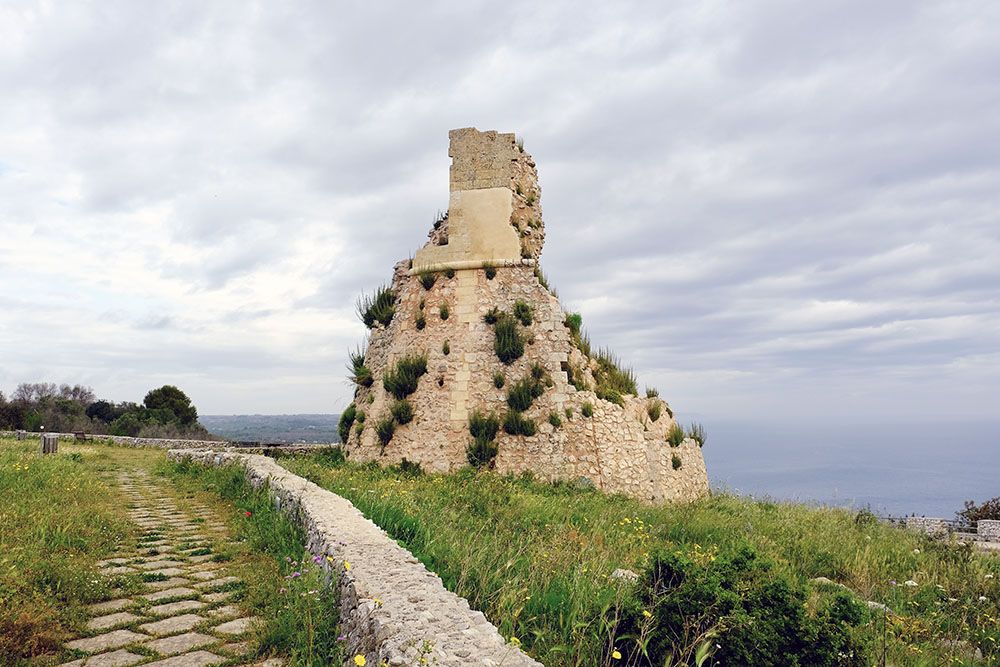
Relaxation on the Cammino del Salento
This hiking package adds an extra dimension to a visit to Puglia and the Salento region in particular. The coastal path or ‘cammino’ is easily walkable, and the stages are such that there is always time to pursue other activities alongside hiking. Walking along the sea and the (trouble-free) luggage transport feels like being well taken care of. This provides a delightful sense of peace and relaxation, allowing ample time to experience the beautiful landscape and the impressive coast.
FAQs about the Cammino del Salento
The entire Cammino del Salento runs from Lecce to Santa Maria di Leuca. The route chosen in this blog pertains to the section from Otranto to Gagliano del Capo. View the description of the entire route.
Our experience is that it is only very minimally marked. The hiking app with the route is truly beneficial for completing the journey.
Most visitors fly to Bari or Rimini. However, Otranto also has a train station, making it accessible by train as well. You would then travel via Lecce.
In Otranto, you can park the car in a parking lot. The hotel can provide advice on this. We parked the car at Parking Renis, at a rate of €5.00 per day. There is supervision.
After the trip, you can travel from Lecce to Otranto by train (1.5 hours) or by bus (1 hour).
You walk an average of four to five hours per day. The distances are manageable, but the paths do not allow for a high pace everywhere. The distances are around 12 - 14 kilometers. There are no significant altitude differences, but there are frequent short climbs.
A raincoat is always advisable as a basic item. Additionally, you frequently walk through taller grass or greenery. A pair of long trousers can be useful to protect your legs from the tall grass. Walking sticks are recommended for the narrow, steep parts of the route. Also, consider sun protection, even in spring.
In the places where you stay overnight, there is always an opportunity to dine through the organization. Occasionally, this is even included in the package. You need to arrange your own lunch. The travel description indicates when advance arrangements are necessary.
Most accommodations are in high-quality hotels. Some B&Bs are more modest, but you always have a private bathroom and a good breakfast.
In the summer, the temperature in this part of Italy can become very high. In April, we found the temperature to be very pleasant. In April, the thermal baths in Cesarea Terme are still closed, as are most swimming pools. Therefore, May is an ideal time to hike the Cammino del Salento. It can become too hot in June. After that, September becomes an attractive period.

